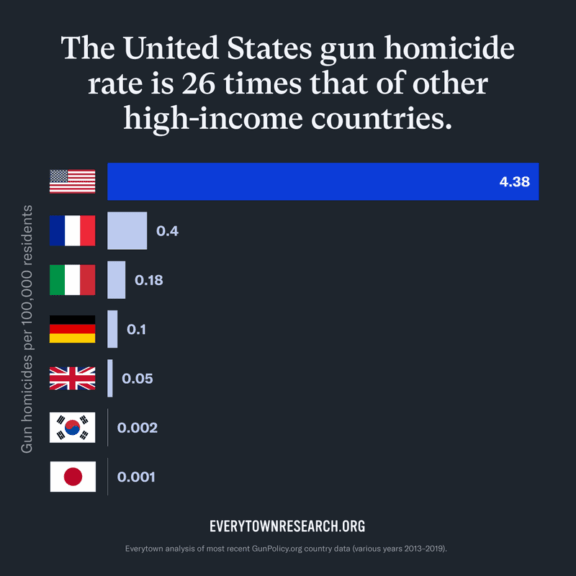Last Updated on by Serena Zehlius
Gun violence in the United States is a complex issue that manifests in various ways such as mass shootings, homicides, suicides, and accidents.
Main Points
The complicated nature of gun violence requires a nuanced approach to tackle each side of the issue, including factors that contribute to the frequency of incidents, the lasting impact they have on communities, and the ongoing efforts to address and prevent them.
The Scale of the Issue:
Compared to other developed nations, the U.S. faces a higher rate of gun-related deaths.
It is important that we examine both the high-profile incidents and the everyday occurrences to grasp the full extent of this problem and work towards effective solutions.

Contributing Factors
Several factors contribute to the high incidence of gun violence in the U.S.
Access to Firearms: The ease with which individuals can access firearms, including high-capacity weapons, contributes to the severity of gun violence incidents.
Mental Health: While not the sole contributor, mental health plays a role in some instances of gun violence.
Addressing mental health challenges is part of the broader strategy to reduce overall risk.
Social and Economic Factors: Gun violence often correlates with social and economic disparities, including poverty, lack of education, and systemic issues.
Addressing these root causes is necessary for long-term prevention.
Impact on Communities
Gun violence in the United States not only leads to tragic losses of life but also deeply affects communities across the nation.
The ongoing impact includes heightened fear, trauma, and long-lasting emotional scars that ripple through neighborhoods and families.
Addressing this issue comprehensively is essential to safeguarding the well-being and safety of our communities.
We can’t overlook the impact that school shootings have on our children.
Even if they have never been exposed to gun violence, they’re taught how to protect themselves and their classmates during “active shooter drills,” which are now just a part of public education for kids living in the U.S..
Watch a school shooter drill in a 4th grade classroom 👇
Policy and Legislative Responses
Efforts to do something about gun violence involve addressing the issue without stepping on the toes of people with a strong belief in the Second Amendment, individual rights, and public safety.
Recently there has been an increase in calls for stricter background checks, limitations on high-capacity magazines, and “red flag” laws—allowing temporary firearm removal in cases of potential danger.
Balancing Act: Rights vs. Safety
Balancing the rights of individuals to bear arms with the requirement of our government to ensure public safety is still a challenge.
Lawmakers, advocacy groups, and citizens engage in ongoing discussions about finding common ground that respects constitutional rights while minimizing the risks associated with widespread gun ownership.
(Maybe not the lawmakers.)
The NRA and gun lobby pay politicians not to pass any type of restriction on the purchase or use of guns.
This makes it nearly impossible to get anything done in Congress, regardless of the fact that a majority of American citizens want something to be done about the increase in mass shootings.

Gun violence in the United States is a complex challenge that requires a comprehensive and collaborative approach.
Addressing this issue involves considering access to firearms, mental health, social and economic factors, and the delicate balance between individual rights and public safety.
In order to remove the damaging influence corruption has on members of Congress, a necessary first step is to get money out of politics.
If that proves impossible, perhaps something can be done to target the donations and pressure coming specifically from the NRA and gun manufacturers.
With the corrupting influence of money and pressure from the gun lobby, it’s unlikely that there will ever be any meaningful progress on addressing gun violence in the U.S.
By continuing to have open dialogues and promote evidence-based policies, there is hope for progress in reducing the incidence of gun violence and creating safer communities for all of us.
Learn More: Get Money Out of Politics







